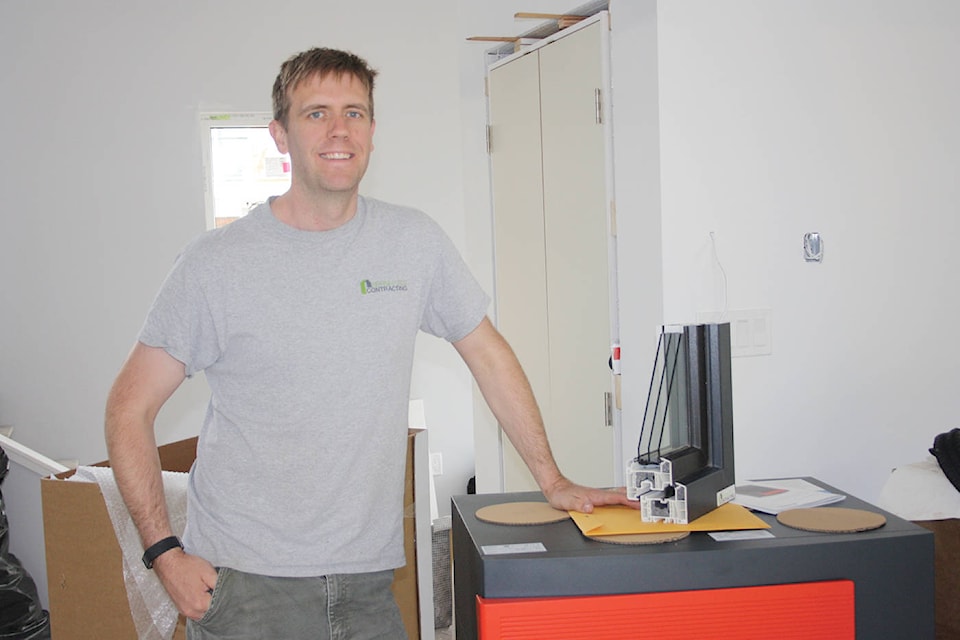Tim Collins
VICTORIA NEWS
Passive houses are the way of the future, and Mark Bernhardt, president of Bernhardt Contracting and vice-president of the Canadian Home Builders’ Association, predicts virtually all new home construction will have adopted the concept within the near future.
Passive houses are structures for which no active action is required to heat the living space. The fires lit in basement furnaces or the high cost use of electric heating units are eliminated and the buildings use only sustainable energy sources for heating and cooling. It’s done by making the building envelope super efficient through insulation, high efficiency windows and doors, and hyper-efficient ventilation systems.
Standing in one of the latest passive homes built by his company at 406 Wilson St., Bernhardt pointed to a unobtrusive panel at the front entrance of the home.
“All we had to do was install a few solar panels and we were good to go. That is the entire control system and it’s very easy to operate,” he said, adding the building is so efficient, the entire heating system draws about 1,200 watts.
“Most people have hairdryers that draw more power than that,” said Bernhardt, adding that just the body heat of building occupants can have an impact on the need for heating within the structure.
“The average person gives off about 70 watts of heat through body heat. Invite a few people over to your new house and you can very literally have a ‘house warming’. The whole structure has a net zero energy cost for heating.”
The concept of passive houses is not a new one, having been widely adopted in Europe in the early 2000s under the Building Research Establishment Environmental Assessment Method (BREEAM) standards. While the concept is relatively new on Vancouver Island (there are now six passive houses in Victoria), they have already made a significant impact in Vancouver where they have just passed one million square feet of completed passive housing. Vancouver is also looking at its first passive firehouse.
Bernhardt lives in one of the passive homes on Vancouver Island, and maintains he would never go back to a regular ‘built to code’ home as it allows him to enjoy a better quality of life.
Some of those quality of life issues have nothing directly to do with energy efficiency, according to Bernhardt. Traffic hum and other outside noises are virtually eliminated and the high efficiency air handling and filtering systems provide fresh air while filtering out pollens and other irritants. They are two characteristics that have led builders to apply the same standards to schools and office structures.
In his role as the vice president of the Canadian Home Builder’s Association, Bernhardt is aiming to spread the message to other Greater Victoria builders and architects about passive houses.
On May 17 the organization is holding an Energy Efficient Lunch and Learn at the Four Points Sheraton Hotel in Langford where the concept of passive houses will be discussed. Tickets for the Lunch and Learn are available at westshore.bc.ca/events/energy-efficiency-lunch-learn.
